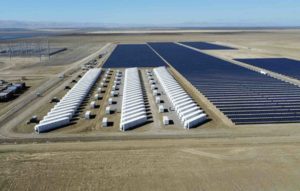The need to add more ‘poles and wires’ to Australia’s electricity transmission networks has again been questioned, with a new report by the Australian Energy Market Operator (AEMO) predicting future oversupply of generation capacity in the National Electricity Market and signalling potential generation reductions.
The 2013 National Transmission Network Development Plan (NTNDP), released on Thursday, also predicts that only renewable energy generation will be added to Australia’s grid out to 2020; 84 per cent of which would come from wind, 13 per cent from large-scale solar PV, and 3 per cent from biomass.
The report, which considers the impact of changing dynamics in the NEM over the next 25 years, including the effect of the Large-scale Renewable Energy Target (LRET) and of a carbon price – or the absence, thereof – finds that the LRET remains the main driver of national electricity generation investment up to 2020.
This includes 168MW of new wind generation that has recently come online in Tasmania, and a further 131MW in Victoria, 270MW in South Australia, and 386MW in New South Wales committed to come online from 2014-15. AEMO says it is aware of close to 15,800MW of proposed wind generation projects.
Biomass emerges as the only new baseload plant predicted to come online, with 1,000MW installed in the carbon price scenario and about 330MW in the zero carbon price scenario. Geothermal, which had been expected to come online towards the end of the 25-year outlook period (along with open cycle gas turbine peaking generation), has now been punted beyond the outlook period.
The report predicts that this new renewable generation would displace existing baseload generation, adding to the current oversupply of generation capacity in the NEM and signalling potential generation reductions. It also finds that the LRET, along with reductions in electricity consumption, will almost certainly result in generation plant retirements, and in some cases a decrease in transmission asset utilisation.
The NTNDP modelling estimates a reduction of 3,700MW in coal-fired generation capacity to 2020, or around 14 per cent of the total current coal-fired installed generation capacity. Zero carbon price modelling results in reductions of around 3,100MW, or 12 per cent of coal-fired generation capacity.
And while coal remains the dominant generation fuel over the outlook period, the report notes that the changes in NEM dynamics could lead to an oversupply of up to 4,000MW of electricity generation capacity, thus further reducing the need for new large-scale generation investment.
The NTNDP also shows that network prices will increase if electricity consumption continues to decline, due to the need to recover the network asset value over a (declining) energy base, rather than on the service delivered by the network.
“Network augmentations that had been under investigation or already committed have been delayed or cancelled, and asset refurbishment and replacement will be the dominant investment driver said AEMO Managing Director and Chief Executive Officer Matt Zema. “The NTNDP identifies network asset refurbishment and replacement as a planning priority compared to transmission network augmentations.”
“There is a need for greater transparency of asset refurbishment and replacement decisions. Planners and investment decision-makers need to fully explore and consider the future need of those assets, as well as cost-effective non-network solutions, in evaluating the cost of refurbishment and replacement against the value of the service provided,” he said.
AEMO is pursuing a range of initiatives to enable efficient investment decision-making, including developing independent transmission connection point forecasts and identifying network investment needs for New South Wales and Tasmania. AEMO is also reviewing projects under a new incentive scheme to improve usage of existing network assets.









